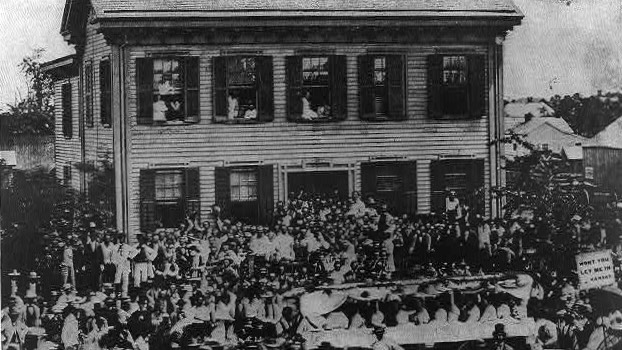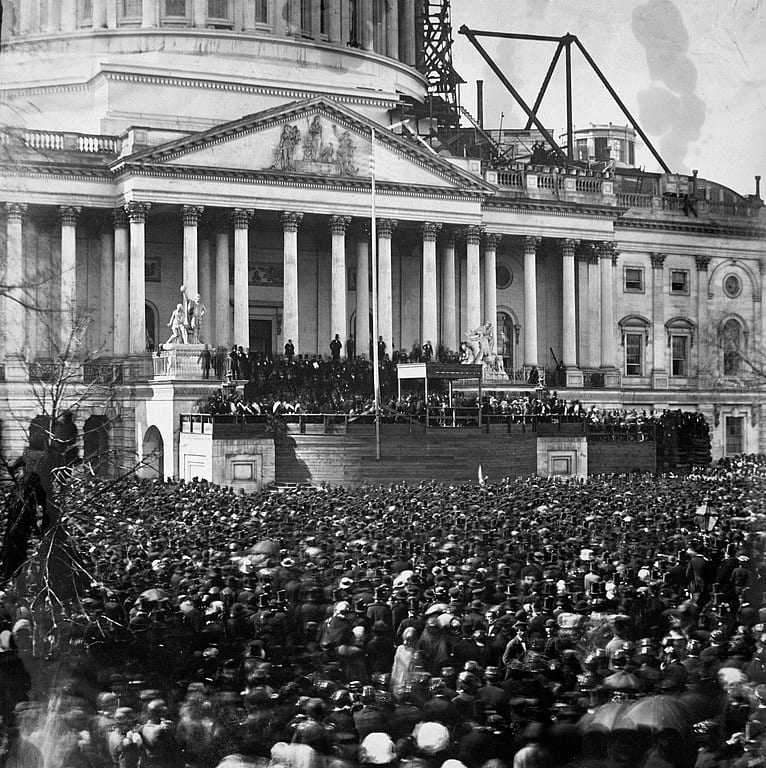
The Lincoln Exhibit
Introduction
In 1854, Abraham Lincoln said of Thomas Jefferson that he “was, is, and perhaps will continue to be our most distinguished politician.” We may now say this of Lincoln. And just as Lincoln meant that one must understand Jefferson’s politics and principles—his deeds and his words—to understand the United States, so must we now say that to understand the United States we must understand Lincoln’s deeds and words. We offer this exhibit on Lincoln as an aid in the effort to understand him and, through him, what remains the world’s most important experiment in self-government.
The exhibit focuses on eight of Lincoln’s most important speeches, offering analytical and interpretive introductions to them. It also offers a variety of additional materials that provide historical context for the speeches. This context, including Lincoln’s understanding of the character of the American people, formed the political terrain Lincoln navigated, guided by his understanding of America’s political principles.
Background to the Kansas-Nebraska Act and the Crisis over Slavery
The Constitution made two compromises over slavery, although it never mentioned the peculiar institution. It allowed “all other persons” to be counted as three-fifths of a free person for purposes of taxation and representation (Article I, section 2). This was a compromise among various views of the persons and property that should be represented in the House of Representatives, which was itself part of a compromise over whether individuals should be represented in both the House and the Senate or if the states alone should be represented in the Senate. The Constitution also provided that the importation of persons by a state could not be prohibited for 20 years after its adoption, until 1808. This was a compromise between those who wanted to ban the importation of slaves immediately and those who wished for there to be no constitutional power to prohibit the slave trade (Article I, section 9). In addition to these two compromises, the Constitution also contained a provision that “no person held to service” in one state would be discharged from that service in another. On the contrary, each state accepted an obligation to return such persons to those to whom their labor was due under the laws of a state (Article IV, section 2). This provision became known as the fugitive slave clause. To implement it, Congress passed the first fugitive slave law in 1793.
In 1807, in what Lincoln once called “apparent hot haste,” Congress passed a law prohibiting the importation of slaves on the first day of January 1808. Four years previous to the passage of this law, the United States had acquired the Louisiana territory. After Louisiana, admitted to statehood in 1812, the first territory from this acquisition to apply for admission as a state was Missouri in 1819. It applied for statehood with a constitution that permitted slavery. At that time, there were 11 free and 11 slave states. Missouri was not admitted as slave state until Maine applied for statehood and was admitted as a free state. As part of this compromise, Congress included in the Missouri statehood enabling act the provision that in the remainder of the Louisiana territory slavery would forever be prohibited north of the line 36’30”.
The separation of Texas from Mexico through a revolution and the establishment of Texas as a separate republic in 1836 raised the issue of the new republic’s admission to the Union, and implicitly the fate of all the land that Mexico held west and northwest of Texas. When Texas joined the Union in 1845, war with Mexico followed. (Mexico considered Texas still part of its territory.) Early in the war, when President Polk asked for an appropriation for peace negotiations, Representative David Wilmot (D-PA) proposed an amendment to the appropriations bill stating that slavery would not be permitted in any territory gained from Mexico in the peace negotiations. The bill passed the House, but not the Senate, where through state representation, the slave interest was stronger than in the House, whose membership represented the larger populations of the free states. Whenever a version of Wilmot’s amendment was subsequently proposed, it met the same fate. The treaty that eventually ended the war, which had to be ratified only by the Senate, did not contain a prohibition of slavery. The contest between free state and slavery advocates over this territory, and what remained of the Louisiana territory, was the final phase of the sectional conflict leading to the Civil War.
Following the Mexican War, California applied for admission as a free state. At that point, the number of free and slave states was equal (15 each). Consequently, California’s application for admission precipitated a crisis, as Missouri’s had 30 years before in the same circumstance. The crisis was resolved by the Compromise of 1850, which consisted of five separate pieces of legislation. Stephen A. Douglas, a Democratic Senator from Illinois, was responsible for getting the legislation passed. The bills admitted California as a free state; set the boundary between Texas and New Mexico and compensated Texas for giving up land claims beyond that boundary; set up territorial governments for Utah and New Mexico, with the provision that the territories could eventually enter the Union as either free or slave states; abolished the slave trade (but not slavery) in the District of Columbia; and strengthened the federal fugitive slave law.
When it came time to organize territories north of Texas that were part of the Louisiana purchase, Senator Douglas again took the lead. He proposed in 1854 a Kansas-Nebraska bill that rescinded the Missouri Compromise line of 36’30”, which was supposed to have been established forever, and included a provision that the status of slavery in a territory was up to its inhabitants. This was the doctrine of popular sovereignty—the people should decide—that Douglas proposed as the best way to resolve the slavery controversy. Its immediate practical result, however, was to foment civil violence. Once slavery got into a territory, it would receive the protection of territorial law, since if property in men was not illegal, then that property required the protection of the law. Protected by the law, slavery would grow and become ever harder to abolish. Immediately, therefore, both free state and slave state advocates, in and beyond Kansas and Nebraska, fought over who would predominate, and whether this peculiar form of property would be allowed. As one scholar has put it, “the Kansas-Nebraska Act legislated civil war on the plains of Kansas.”
The civil war in Kansas aggravated the sectional conflict and pointed toward the greater civil war that would begin six years later. This conflict became even more likely with the Dred Scott decision (1857). In this decision, the Supreme Court held (7–2), that persons of African descent were not citizens; had “no rights which the white man was bound to respect;” and that Congress could not prohibit slavery in the territories, since the right to hold property in slaves is “distinctly and expressly affirmed in the Constitution.” But if that right was in the Constitution, should not southerners have the right to take their property into any state? Did not the Dred Scott opinion suggest at least the possibility that a future court ruling might in fact declare this to be so and thus make slavery, rather than freedom, national?
It was to keep freedom national that Lincoln returned to politics during the controversy over the Kansas-Nebraska act. Douglas based his solution to the slavery controversy, as well as his ambition to be president, on popular sovereignty, the idea that the people should choose. But Lincoln saw the danger to self-government and human liberty in an understanding of popular sovereignty divorced from the judgment that slavery was wrong. The people choose because all men are created equal and so no one has a right to choose for another, without the other’s consent. If the people chose slavery—chose inequality—then they chose to undermine popular sovereignty and thus their own freedom. Popular sovereignty was the strongest principle among Americans, but Lincoln through his words and deeds had to show the people that the only thing more important than that principle was its ultimate cause, human equality. More difficult, he had to show the people that preserving their liberty meant restricting their freedom: there were some things that not even the people could rightly choose to do.

Documents in the Exhibit
- “The Perpetuation of Our Political Institutions” (Lyceum Address)
- Temperance Address
- Speech on the Kansas-Nebraska Act (Peoria Address)
- Cooper Union Speech
- Fragment on the Constitution and the Union
- First Inaugural Address
- Gettysburg Address
- Second Inaugural Address

Other Exhibit Components
- Presidential Election Maps, 1848-1864
- Timeline of Events
- Background to the Slavery Conflict
